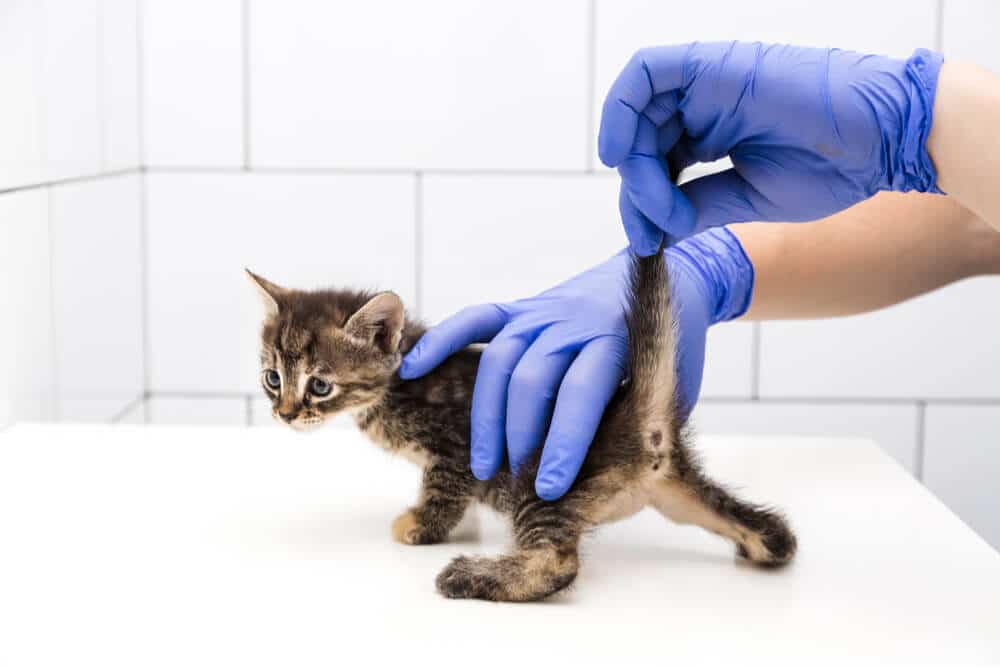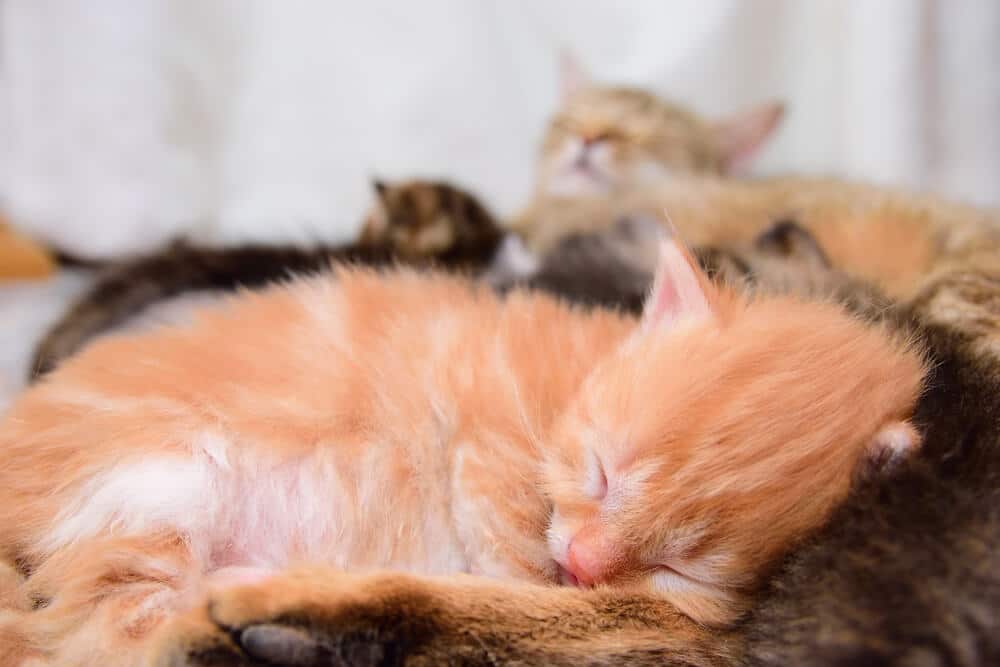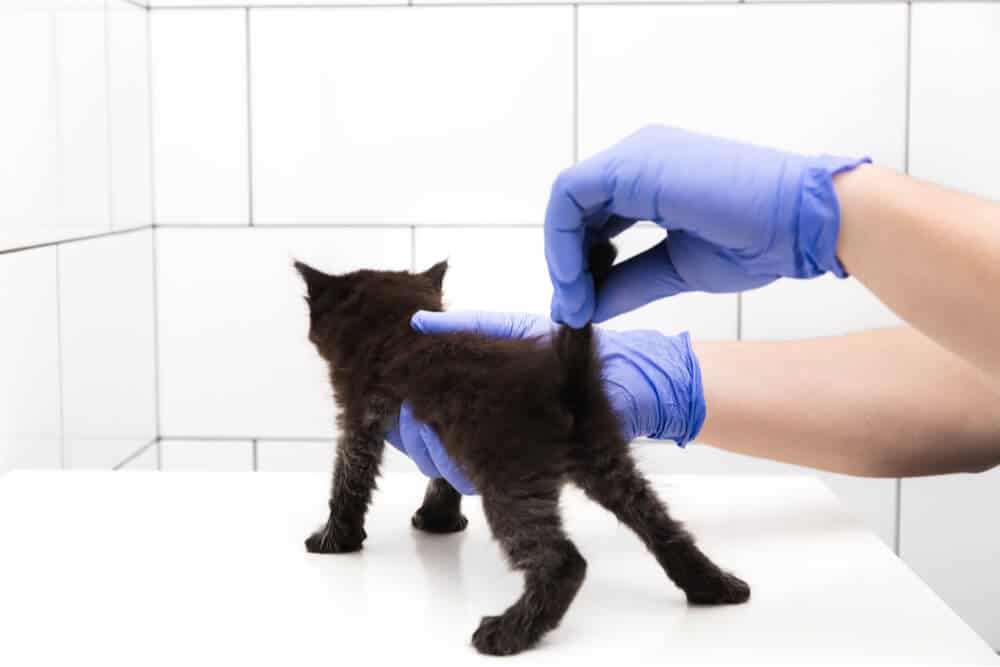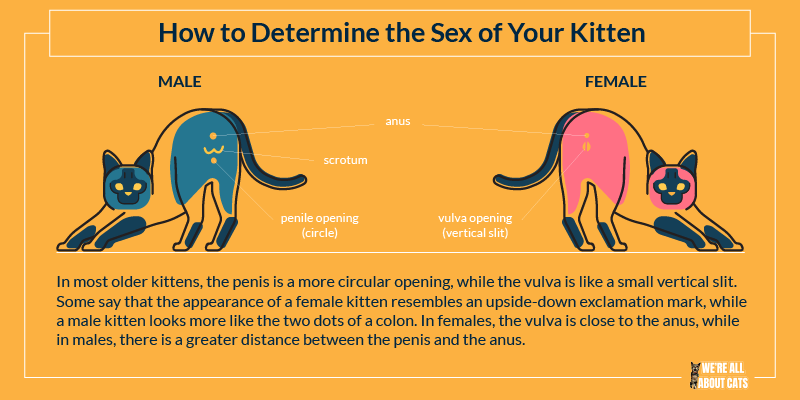Sexing kittens is an important part of caring for a new litter, determining details of how the kittens will be cared for and how they’ll be rehomed.
Sometimes we kid ourselves that a small kitten may look particularly feminine, so she surely must be a girl kitten, or a larger, stronger one is certain to be a little tomcat, but the truth is that it’s impossible to tell the sex of a kitten by its general appearance and demeanor.
Read More: How To Take Care Of A Kitten: The Complete Guide
The only way to determine a kitten’s sex for certain is to physically examine the appearance of the area beneath the tail: the kitten’s genital area.
Steps To Sexing Kittens
Before you start attempting to identify the sex of your kittens, make sure that both mother and kittens are ready. Kittens should be at least two weeks of age and their mother should be made comfortable with you handling her babies.
Warning: do not attempt to do this on newborn kittens. It is easier and less stressful to sex them when older—at least two weeks of age.
Before you start identifying your kittens’ gender, make sure that you’re well-prepared. Taking a few preparatory steps that will help you to ensure that it’s the right time and place.
- Make sure that the mother cat is comfortable with you handling her offspring. You may wish to distract her by offering her tasty food and may even prefer to take her to a different room. This way, you can carry out the examination of the kitten without having to be wary of her response. With feral kittens, you may prefer to put the kittens in a box, take them indoors away from the mother cat, then return them as rapidly as you can.
- Make sure that the room is warm. Young kittens can become chilled very easily if in a cold environment away from their mother.
- If the kittens become agitated or upset at any time, stop the process and return them to their mother.
- Carry out the inspection quickly and smoothly especially with very young kittens. The mother-kitten bond can be easily disturbed, and the aim is to return the kittens to the mother as rapidly as possible to avoid causing any upset.
Also Read: What To Know When Fostering Kittens: 6 Essential Tips
Once you’ve decided that it’s the right time, gently pick up your kitten and proceed to the next steps.
To determine your kitten’s sex, raise their tail to observe the shape and position of the anus and genitalia.
- Place the kitten on its front on a soft non-slip surface like a towel.
- Lift up the kitten’s tail so that you can visually inspect the perineal area (i.e. the area around and below the anus).
- Both male and female kittens have two orifices (openings) in the perineal area. The top opening is the anus, and the lower opening is the genital opening: penis (in males) or the vulva (in females). The key characteristic to note is the shape of the genital opening.
- In most older kittens, the penis is a more circular opening, while the vulva is like a small vertical slit. Some say that the appearance of a female kitten resembles an upside-down exclamation mark, while a male kitten looks more like the two dots of a colon.
- In younger kittens and in some older kittens, it can be hard to distinguish this difference, so instead, focus on the distance between the two orifices.
- In females, the vulva is close to the anus, while in males, there is a greater distance between the penis and the anus.
- With older kittens (e.g. over ten weeks), the scrotal sac can be seen in males, as a small double-bulge containing the two testicles, between the anus and the penis orifice.
- It can be difficult to determine the sex of the kitten if you are only looking at one animal, so it’s easiest to examine all of the kittens, one after the other. In most cases, there will be around 50% of each gender, and it should be relatively easy to sort them out into two groups of similar appearances i.e. male and female.
- Once you have divided the kittens into a “male group” and a “female group”, double-check them by having a quick look again to ensure that each individual in the group has a similar appearance.
Finally, use a safe semi-permanent marker of some kind (e.g. a felt tip pen, or white Tippex eraser fluid) to mark all individuals in one group.
By placing a mark on the kittens or giving them different-colored collars, you can identify the sex of your kittens from a distance in the future.
If in doubt, ask your local DVM for veterinary advice.
cat owners only need to do this task once or twice in a lifetime, while veterinarians, as well as being trained professionally, check the gender of kittens as a regular part of their working life.
Frequently Asked Questions
At what age can you tell the gender of a kitten?
Skilled and experienced operators can identify the gender of newborn kittens. As an non-expert, it’s better to avoid handling new kittens until they are at least two weeks of age, to avoid harming the mother-offspring bond in any way.
Do male and female cats look different?
Male cats do tend to be larger, more muscular, and female cats tend to be smaller and daintier, but this is not a rule that always applies.
There are some sex-linked colour differences: nearly all tortoiseshell cats or calico cats (black, orange and white) are female, while around 70% of ginger cats are male. Tabby cats are equally likely to be male or female.
Should you get a male or female kitten?
This is a personal choice: both male and female kittens can make adorable pets, and in any case, it’s generally recommended that the operation to neuter or spay them should be carried out before puberty, so sex-linked differences tend to be minimal in adult pet cats.












I have a cute cat, I’ve had her for 2 years. Last month she gave birth to two cats. After they were 2 weeks old, my mother taught me to tell the difference between a male cat and a female cat by the anus. A female cat’s anus is closer to the vaginal opening, while a male cat’s anus and penis are further apart, up to half an inch wide.
Why do you refer to the gender of the kittens? Surely you mean sex not gender?
Well, Sarah, this may be about different understandings of definitions.
The word “sex” in this context is usually categorized as female or male and that is what we are talking about here. Strictly speaking, gender refers to the socially constructed roles, behaviours, expressions and identities of girls, women, boys, men, and gender diverse people. Obviously these do not apply to kittens. In fact, in kittens, sex and gender are terms that are often used interchangeably. I hope this helps